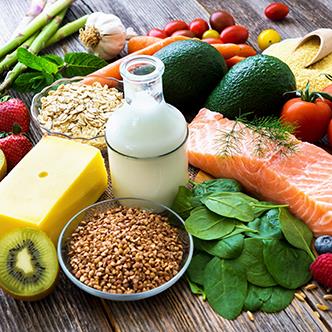
In the midst of mixed messages around food, experts help clarify exactly what it means to have a heart-healthy diet and how to adapt those guidelines based on personal preferences.
Published in the American Heart Association journal Circulation, this statement reviewed the latest dietary recommendations to help clarify the age-old question: What is a healthy diet? While guidelines have remained relatively consistent, few Americans’ food intake meets the current definition of a healthy, well-balanced diet.
Based on the 2015–2020 Dietary Guidelines for Americans, a healthy eating pattern is rich in vegetables, fruits and whole grains, and includes low-fat dairy products, poultry, fish, legumes, nuts, and non-tropical vegetable oils (i.e., cooking with olive oil instead of coconut or palm oils). A healthy diet also limits intake of sweets and desserts, sugar-sweetened beverages, red meats and processed foods.
Heart health organizations like the American Heart Association and the American College of Cardiology also highlight the importance of consuming enough dietary fiber and reducing intake of saturated fat, sodium and sugar by choosing wholesome, nutrient-rich foods. They also endorse the many benefits of the DASH diet, which limits sodium intake to reduce blood pressure, and the Mediterranean diet, which has been shown to improve cardiovascular health.
However, the key to improving diets, as authors explain, is for Americans to adapt recommendations based on their unique cultural, economic and taste preferences. For example, whole grains can include breads, tortillas, barley, brown rice, quinoa, and cooked cereals. Proteins can include anything ranging from lean beef and pork to eggs, nuts and seeds. Experts believe that choosing our favorite foods from this wide array of healthy options can help us stick to a healthy diet over time.
The challenge is that very few Americans currently adhere to dietary recommendations. National survey data from 2009–2010 shows that the bulk of our calories come from foods like burgers, desserts, sugar-sweetened beverages, chips and pizza. In fact, researchers found that these foods accounted for 43% of our daily caloric intake. Data from 2007–2010 shows that most Americans don’t eat enough fruits, vegetables and low-fat dairy, yet exceed recommended limits for sugar, saturated fat and sodium consumption.
To help more Americans meet dietary guidelines, experts recommend a variety of tools available online designed to help people improve their diet and lifestyle. Daily Food Plans is a tool that helps create a meal plan based on personal preferences and weight loss goals, while tools like MyFitnessPal and the Super Tracker develop personalized nutrition and physical activity plans to improve health.
By clarifying guidelines and providing tools to help Americans improve their diet, experts hope to make progress in improving overall health and in preventing heart disease—the No. 1 killer of men and women in the United States.